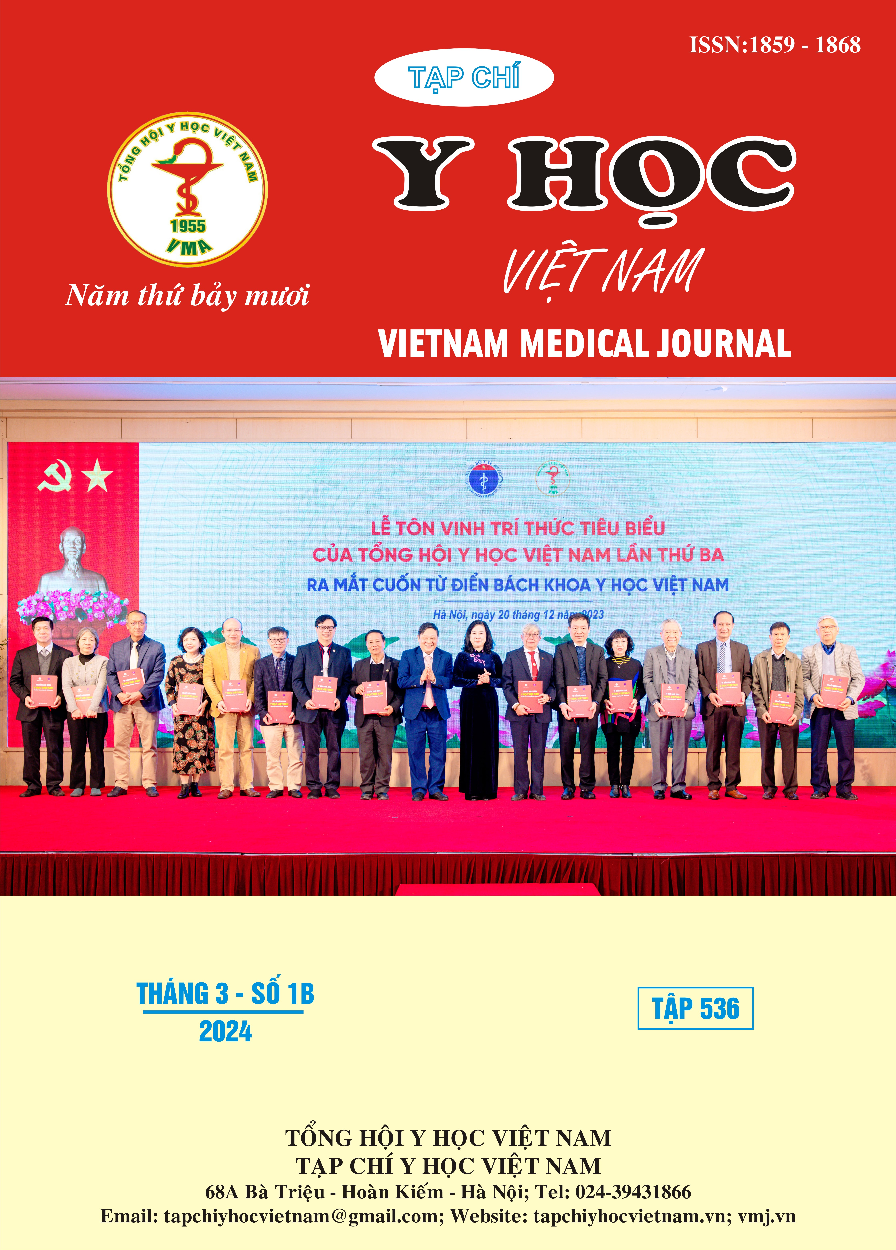CLINICAL FEATURES, PARA-CLINICAL FEATURES AND RESULTS OF TREATMENT OF PERTUSSIS AT THE DEPARTMENT OF TROPICAL DISEASE, NGHE AN OBSTETICS AND PEDIATRIC HOSPITAL
Main Article Content
Abstract
Objectives: Describe the clinical, paraclinical characteristics and treatment results of pertussis at Nghe An Obstetrics and Children's Hospital in 2017. Subjects and research methods: 100 patients, who were diagnosed with pertussis according to the criteria of Global whooping cough conference 2011, were inpatient treatment at the Department of Tropical Diseases - Nghe An Obstetrics and Pediatrics Hospital. Results: Patients’s ages under 3 months accounted for the highest proportion with 74%. All cases had symptoms of cough (100%) with paroxysmal cough accounting for 95%, cough with red face and cyanosis accounting for 68%. 13% of cases had elevated white blood cells ≥30,103/ml, 52% of which had lymphocyte counts ≥ 70%. Regarding the treatment results, most patients progressed well (95%) with an average treatment time of 10.03 ± 8.3 days. The rate of complications is 63%, of which the most common is pneumonia (46%). The results of multivariate regression analysis showed that the following factors: patient’s age under 3 months, pneumonia and peripheral blood leukocyte increase above 30,103/mm³ are predictive factors for severe pertussis. Conclusion: Cough is a characteristic sign of whooping cough found in all cases. Factors including age under 3 months, pneumonia and peripheral blood white blood cell count above 30,103/mm³ are factors that are independently related to severe pertussis.
Article Details
References
2. Trần Minh Điển, Phạm Hồng Sơn, Nguyễn Trọng Thành và cộng sự (2015). Đặc điểm bệnh nhân ho gà tại Bệnh viện Nhi Trung ương năm 2015. Tạp chí y học dự phòng; 27(6). 69-76.
3. Berger JT, Joseph A Carcillo, Thomas P Shanley, et al (2013). Critical Pertussis Illness in Children, A Multicenter Prospective Cohort Study. Pediatric critical care medicine. 14(4), 356-65.
4. Lương Minh Hoà, Đỗ Thiện Hải, Đỗ Thị Thúy Nga và cộng sự (2019). Đánh giá kháng thể IgG kháng ho gà ở các bà mẹ có trẻ dưới 3 tháng tuổi mắc và không mắc bệnh ho gà tại Bệnh viện Nhi Trung ương, Hà Nội, năm 2017 - 2018. Tạp chí Y học Dự Phòng, 28 (4), 108 -114.
5. Cui Zhang, Yanmei Zong, Zhe Wang, et al (2022). Risk factors and prediction model of severe pertussis in infants < 12 months of age in Tianjin, China (2022). BMC Infect Dis; 22(1):24.
6. Cherry JD, Tan T, Wirsing von Konig CH, et al (2012). Clinical definitions of pertussis: Summary of a Global Pertussis Initiative roundtable meeting, February 2011. Clin Infect Dis; 54(12): 1756-64.
7. Narkeviciute I, Ema Kavaliunaite, Genovaite Bernatoniene, et al (2005). Clinical presentation of pertussis in fully immunized children in Lithuania. BMC Infect Dis; 5, 40.
8. Alberto E Tozzi, Lucilla Ra, Marta L Ciofi degli Atti, et al (2003). Clinical presentation of pertussis in unvaccinated and vaccinated children in the first six years of life. Pediatrics. 112(5):1069-75.
9. Mikelova LK, Scott A Halperin, David Scheifele, et al (2003). Predictors of death in infants hospitalized with pertussis: a case-control study of 16 pertussis deaths in Canada. J Pediatr. 143(5), 576-81.
10. Kathleen Winter, Kathleen Harriman, Jennifer Zipprich, et al (2012). California pertussis epidemic, 2010. J Pediatr. 161(6), 1091-6.


